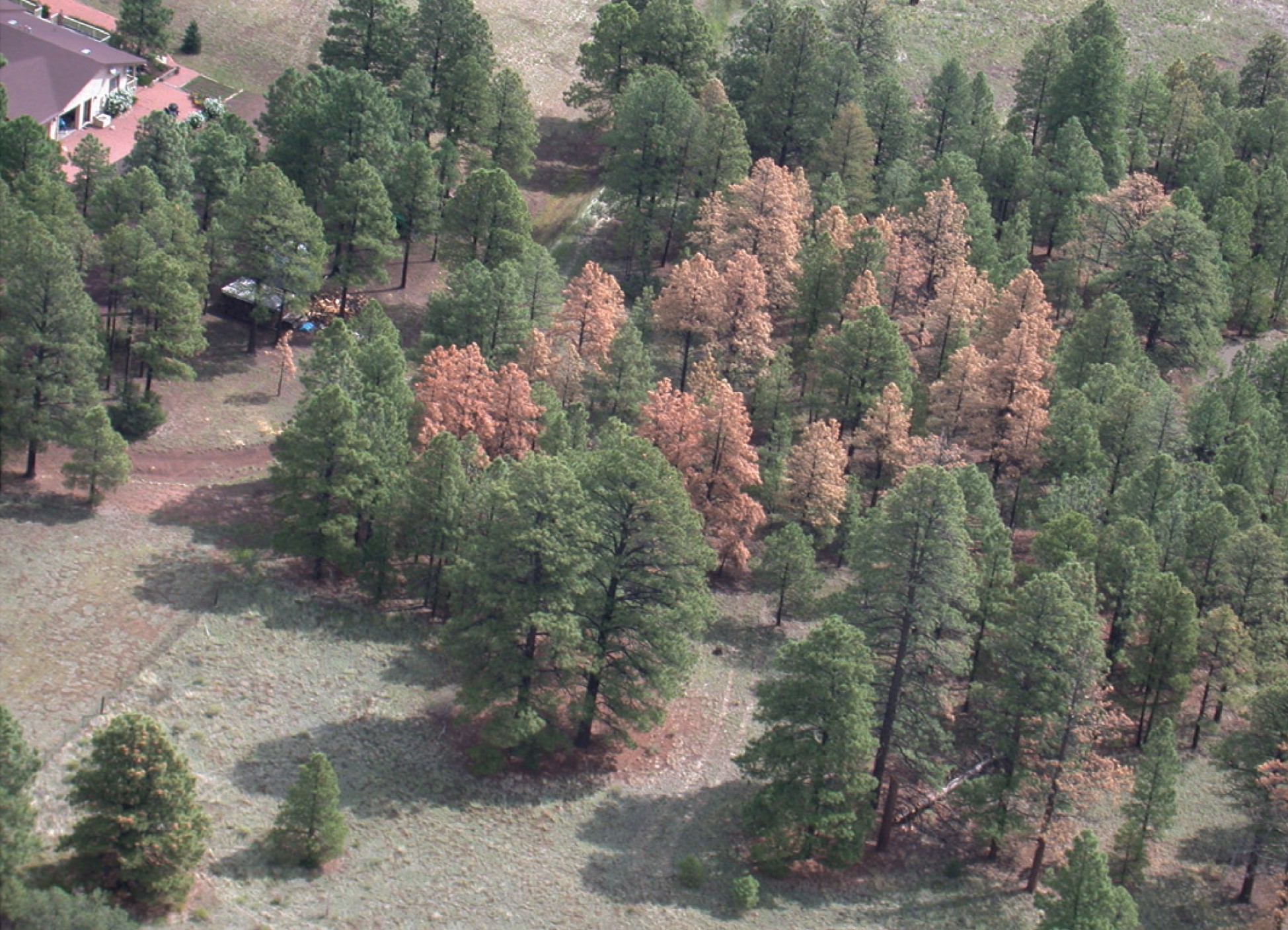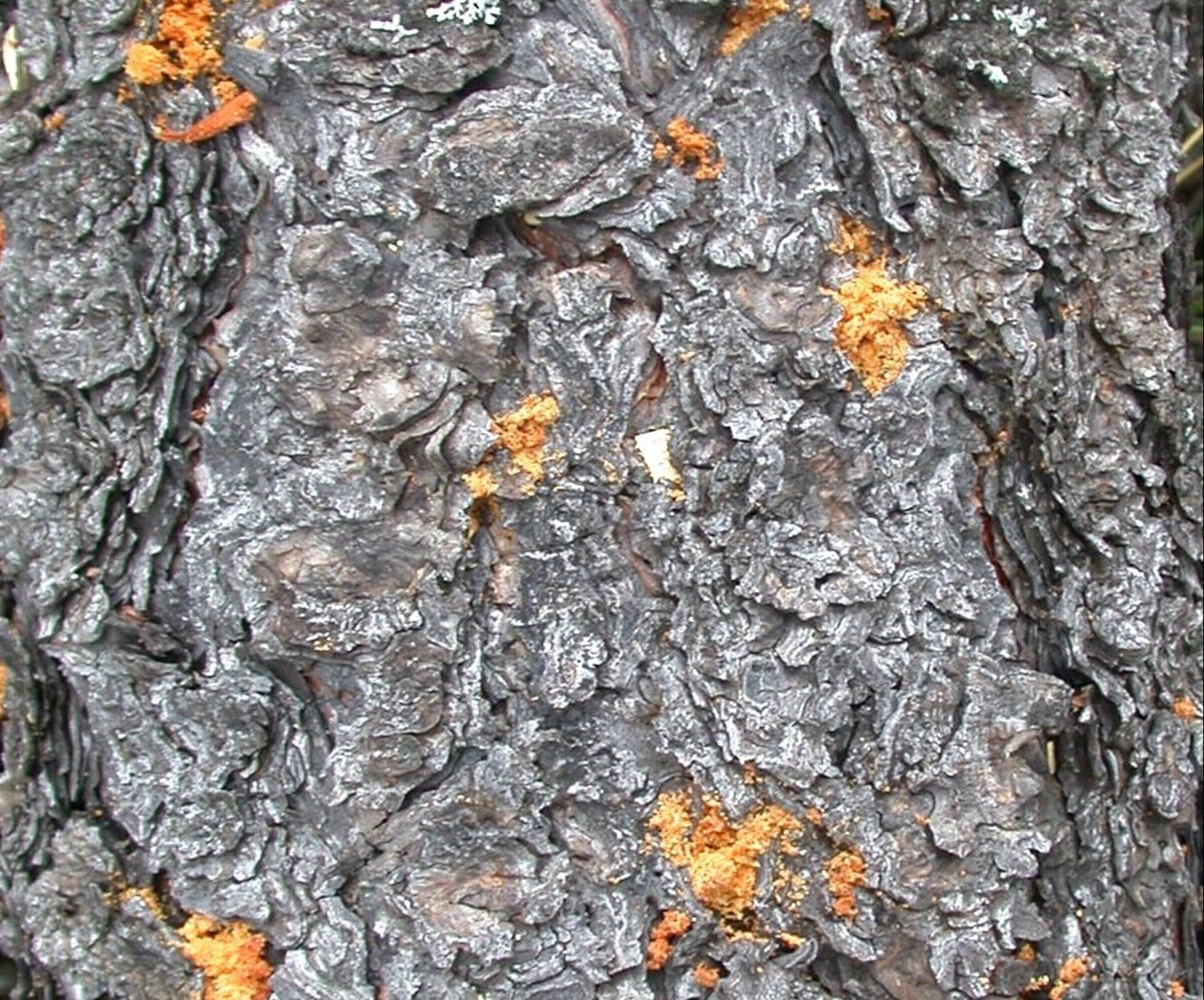 Bark Beetles and Pesticides - April 7, 2021 Jeff Schalau, Agent, Agriculture & Natural Resources University of Arizona Cooperative Extension, Yavapai County As recent climatic events have unfolded, bark beetles and the mortality caused by their activity has become an increasing concern in the Prescott National Forest. In 2002-03, we had a bark beetle outbreak and I provided science-based information to Yavapai County residents in collaboration with other federal and state agencies. During that outbreak, much of my time and energy was spent trying to correct misinformation related to pesticides and their use to “control” or protect trees from bark beetles. As an educator for the University of Arizona, I provide peer-reviewed, research-based information and encourage homeowners and tree workers to comply with the Federal and State laws/regulations that govern the use of pesticides. Pesticides require testing to ensure they will work in the situations where they are applied. No pesticide may be sold in the United States until the U.S. Environmental Protection Agency (EPA) has reviewed the manufacturer's application for registration and determined that the use of the product will not present an unreasonable risk to humans, non-target organisms, or the environment. Only after the EPA has reviewed the research findings and registered the product can a pesticide product be sold to the public. Further guidance within the Federal Insecticide, Fungicide, and Rodenticide Act (FIFRA) tells us it is illegal to use a pesticide in any way not permitted by the labeling. A pesticide may be used only on the plants, animals, or sites named in the “Directions for Use” on the product label. You may not use higher dosages, higher concentrations, or more frequent applications. A person may apply a pesticide against any target pest not listed on the labeling if the application is to a plant, animal, or site that is listed under “Directions for Use” on the label. There are no pesticides labeled or proven effective for killing bark beetles that have successfully colonized ponderosa pine. Furthermore, beware of companies that claim their organic treatment or fertilizer will prevent or impede colonization of Ponderosa pine by bark beetles. In 2002, there were several of these and I had a gag order placed upon me because I used the term “snake oil” to describe one of these products. There are some pesticides labeled for prevention of colonization by Ips and Dendroctonus bark beetles that colonize Ponderosa pine. Some labeled pesticides that contain the active ingredients carbaryl (trade name Sevin SL) or permethrin (trade names Astro and Dragnet) are labeled for pine bark beetles. These active ingredients are present in several other trade name pesticides. However, these other products may not be formulated or registered for use on bark beetles. The pesticides included above recommended above coat the bark and act as a stomach poison to beetles that chew into the bark where it is coated. The entire tree trunk must be sprayed and these treatments last for six months. Another treatment has recently been approved for prevention of pine bark beetles. It is applied using tree injection and contains 4% of the active ingredient Emamectin Benzoate. This insecticide is injected into the tree under pressure. However, soil moisture must be present to move the material upward to the entire canopy through the tree’s xylem. If sufficient soil moisture is not present, it could be enhanced by irrigation of the treated tree. To best accomplish this, a soaker hose can be used to apply irrigation to the soil at and slightly beyond the tree’s dripline (vertical projection of the tree’s canopy) to a depth of two feet. It is important to note that irrigation of native-grown Ponderosa pine is an inexact science as roots can be as far as 3-5 times the trees height. It is also recommended that systemic pesticide injections be made by a certified pesticide applicator. New research designed to protect trees from bark beetles is ongoing. These studies must be scientifically designed, conducted in an unbiased manner, statistically valid, and peer-reviewed. This is the scientific method of generating new knowledge. If it does not pass these tests, then it is anecdotal evidence and cannot be relied upon. Naming of companies or products is neither meant to imply endorsement by the author nor criticism of similar companies or products not mentioned. You can follow the Backyard Gardener on Twitter – use the link on the BYG website. If you have other gardening questions, email the Master Gardener Help Desk in Prescott (prescottmg@gmail.com) or Camp Verde (verdevalleymg@gmail.com) and be sure to include your name, location, and phone number. Find past Backyard Gardener columns or provide feedback at the Backyard Gardener web site: https://cals.arizona.edu/yavapai/anr/hort/byg/. Images  Under normal conditions, beetle killed trees may be seen in small groups and as drought or stress conditions develop, larger groups can be colonized (University of Arizona Cooperative Extension).
Under normal conditions, beetle killed trees may be seen in small groups and as drought or stress conditions develop, larger groups can be colonized (University of Arizona Cooperative Extension). Arizona five-spined Ips (Ips lecontei, Jeff Schalau, University of Arizona)
Arizona five-spined Ips (Ips lecontei, Jeff Schalau, University of Arizona) Pitch tubes are often present on colonized trees. In this photo, the tree has been successfully colonized by bark beetles (University of Arizona Cooperative Extension).
Pitch tubes are often present on colonized trees. In this photo, the tree has been successfully colonized by bark beetles (University of Arizona Cooperative Extension). Boring dust as a result of bark beetle colonization (Photo by Jeff Schalau, University of Arizona).
Boring dust as a result of bark beetle colonization (Photo by Jeff Schalau, University of Arizona).Additional Resources Pine Bark Beetles, University of Arizona Cooperative Extension extension.arizona.edu/sites/extension.arizona.edu/files/pubs/az1300-2015.pdf Using Insecticides to Prevent Bark Beetle Attacks on Conifers, University of Arizona Cooperative Extension extension.arizona.edu/sites/extension.arizona.edu/files/pubs/az1380.pdf Addendum to Using Insecticides to Prevent Bark Beetle Attacks on Conifers, University of Arizona Cooperative Extension extension.arizona.edu/sites/extension.arizona.edu/files/programs/AZ1380%20Addendum.pdf Guidelines for Thinning Ponderosa Pine for Improved Forest Health and Fire Prevention, University of Arizona Cooperative Extension extension.arizona.edu/sites/extension.arizona.edu/files/pubs/az1397-2014.pdf |